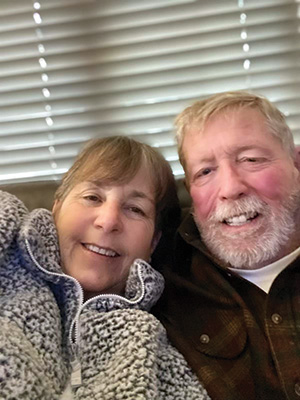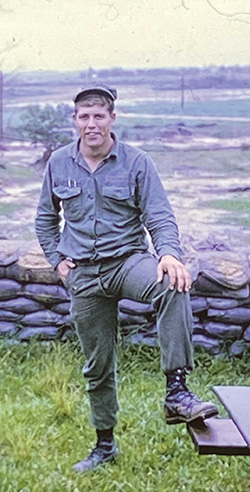
In 1965, President Lyndon Johnson doubled monthly draft calls, and like many other young American men, 23-year-old Ron Keffer received his notice letter.
“My father’s death in World War II made me strongly averse to going to war, but I didn’t want to face the consequences of not reporting for the draft,” Keffer said.
Keffer didn’t face the consequences of not showing up, but he did experience others as a result of his service.
While in training, Keffer began having medical issues with his feet and could not complete the education and preparation for his military occupation. As a result, the Navy employed him in combat operations and attached him to Naval Mobile Construction Battalion 133, which built airfields in central Vietnam.
Keffer’s feet became a significant medical problem about halfway through his yearlong deployment, resulting in his evacuation to Japan before returning to the states. Doctors stateside diagnosed him with vascular insufficiency, and Keffer was medically discharged from the Navy shortly after.
Keffer thought he had left Vietnam behind until 1998, when he was diagnosed with prostate cancer as a result of Agent Orange exposure. Doctors advised him to connect with DAV to file a Department of Veterans Affairs disability claim for his illness.

Over the next two years, he underwent several surgeries while a DAV benefits advocate assisted him in securing VA disability compensation.
Two decades after Keffer’s initial cancer diagnosis, he was told that cancer had returned and doctors recommended surgical intervention.
“During my surgery, medical complications arose and I fell into a coma,” Keffer said. “When I finally woke up, I discovered that the doctors had amputated my right foot. Doctors informed me they had to amputate it because of my history of vascular insufficiency. If it wasn’t for my now-wife, Kathy Ames, I don’t know if I would still be around.”
According to the Department of Defense, the total number of service members who experienced traumatic limb loss from the Vietnam War is 3.4% of those who were injured in battle, which amounts to more than 5,200 individuals. However, no information is available on the total number of Vietnam veterans who have experienced limb loss later in life because of exposure from Agent Orange.
The loss was felt acutely by Keffer and his wife.
“This time in our lives was so challenging for us,” Ames said. “When Ron was in the ICU, I had to call Ron’s daughters constantly to communicate his care and have them relay any medical directives to his doctors. It was just so difficult to deal with, but we got through it.”
Keffer spent five months in the intensive care unit, and the hospital discharged him a week short of a year. While his prognosis was rocky, the couple was just happy to be back home.
However, life became entirely different for Keffer, who was now missing his right foot. Ames had to navigate complex caregiving responsibilities such as organizing and dispensing Keffer’s medications, changing various medical equipment and assisting with whatever else was necessary.
One of the more challenging aspects was transportation. Keffer knew the VA had an adaptive automobile grant and applied for the program. Unfortunately, the VA denied his application because his amputation was not considered service-connected. So he decided to appeal the decision.

Keffer ended up connecting with DAV benefits advocate Patrick Eustis, a retired Navy corpsman.
“After reviewing Keffer’s claim, I told Keffer we would fight the appeal based on the fact the amputation was a secondary complication due to his service-connected vascular insufficiency,” Eustis said.
At the appeal hearing, the VA agreed with the argument Eustis presented and granted Keffer’s service connection for his amputation, making him eligible for the VA adaptive automobile grant, which provides financial assistance that would help Keffer retrofit his vehicle and keep him driving even without having a right foot.
“DAV has been a lifesaver,” Keffer said. “Their knowledge of veteran benefits is unparalleled, and we are just so grateful for their support.”
“Stories like Ron’s demonstrate why it is so important to have a DAV benefits advocate by your side,” said DAV National Service Director Jim Marszalek. “Not only are they experts in VA disability claims, but they can advise and help veteran families like Ron and Kathy unlock additional veterans benefits they have rightfully earned.”





